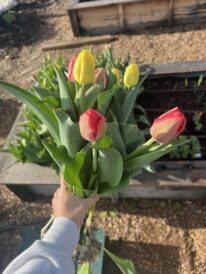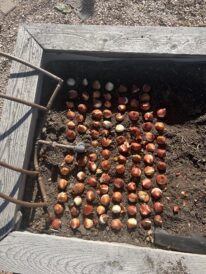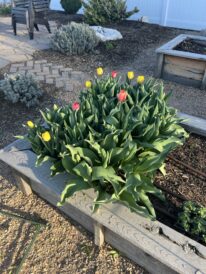Garden Help Desk: Want to grow tulips for indoor bouquets? Here’s how
- When growing tulips for long-stemmed cutting, you can pull the entire plant at bloom time, bulb included, to give you the longest stem length possible. Simply rinse away any soil on the stems and cut them to your preferred length.
- You’ll get the most flowers per square foot if the bulbs are spaced closely — about the same spacing as eggs in a carton.
- Cutting tulips can be displayed with their bulbs attached. Rinse away any soil on the bulbs and stem, then tie the stems into a tidy bundle using decorative ribbon or twine.
- For the longest vase life, harvest cutting tulips when they begin to show color but haven’t fully opened.
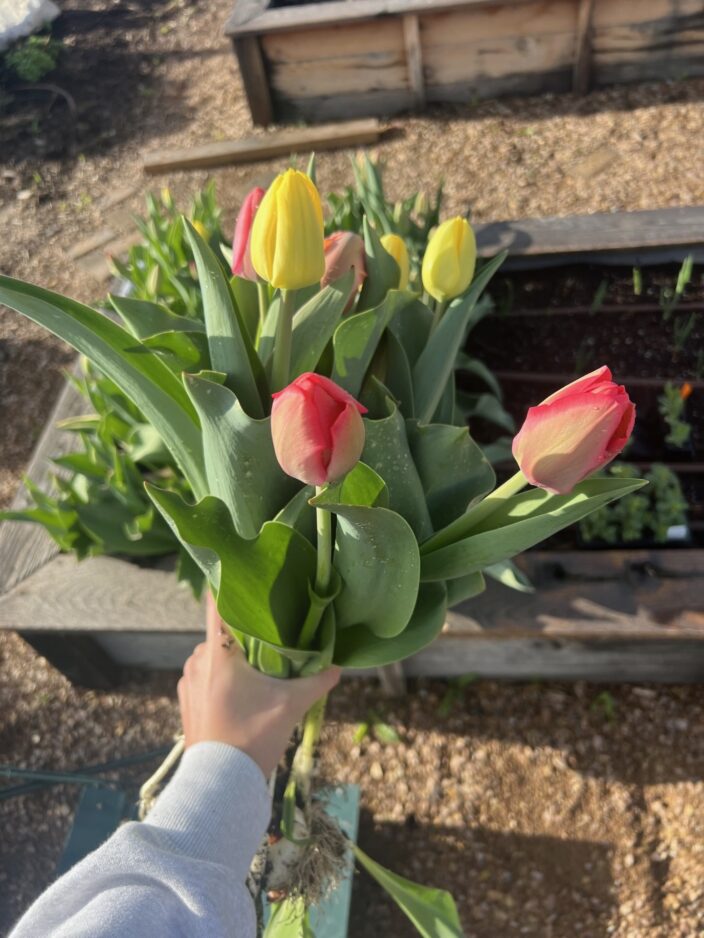
Courtesy Meredith Seaver
When growing tulips for long-stemmed cutting, you can pull the entire plant at bloom time, bulb included, to give you the longest stem length possible. Simply rinse away any soil on the stems and cut them to your preferred length.
Do you enjoy having a vase of colorful flowers in your kitchen? Are you a tulip fan? Have you ever admired the beautiful, long-stemmed tulip bouquets that show up in stores each spring? Did you know that you could grow beautiful bouquets like those in your own garden?
Many of us are placing our bulb orders now, and with just a few dozen extra bulbs and a little effort this fall, you could be harvesting your own colorful tulip bouquets next spring.
There are a few advantages to growing your own cut tulips.
- Growing your own is less expensive than purchasing bouquets.
- Your tulip bouquets will be fresher that purchased bouquets because they’ll go straight from harvest to vase in just an hour or two.
- You can choose unique color combinations that aren’t available with tulip bouquets you purchase.
There are also some disadvantages, though.
- For the longest-stemmed tulips, you’ll only get a tulip from each bulb once.
- Cutting tulips will use space in a garden area from October into May (although that space can be used for tender annual flowers and vegetables after the bulbs are pulled).
When planting tulips for cut flower use, many things should be considered. To begin with, tulips planted for cutting can be spaced much more closely together than those you’d plant in your landscape beds because you’ll be removing the bulbs when you harvest. Space the bulbs out like eggs in a carton to get the most blooms from every square foot of space you’re using.
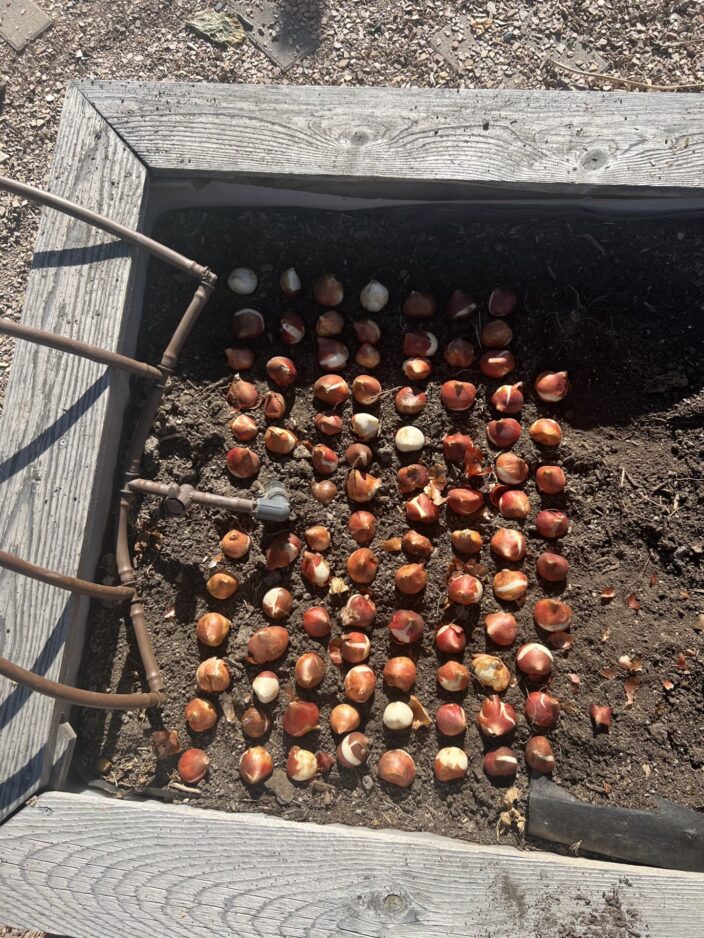
Courtesy Meredith Seaver
You’ll get the most flowers per square foot if the bulbs are spaced closely — about the same spacing as eggs in a carton.
Flowering bulbs depend on their leaves for the energy they’ll need to produce the following year’s flowers. If you lift the entire tulip plant to give yourself the longest stem possible, the bulb won’t have enough energy to produce a flower the next season. Discarding the bulbs after harvesting this way is your most practical option.
However, if you’re willing to give up several inches of stem length in exchange for an extra few years of blooms from your bulbs, you can leave the bulbs in the ground from year to year. You’ll need to space out the bulbs a bit more when planting, so you won’t get as many flowers per square foot. Make sure to leave at least two sets of leaves on the plants when you cut off the flowers. The foliage you leave on the plants needs to be left to yellow and die back naturally before cutting everything back to the ground.
Additional tips with tulips
To give you the longest vase life, pull your tulip bulbs as they start to show color (before they open). Hose off the bulbs, cut to desired length and place in a vase of flowers to enjoy indoors.
You can also display long-stemmed tulips with their bulbs attached by rinsing away the soil on the bulbs and tying the stems into a tidy bundle. These tulips may not last as long as cutting tulips in a vase, though.
You can plant separate blocks of early season, mid-season and late season tulips to extend your indoor bouquet season.
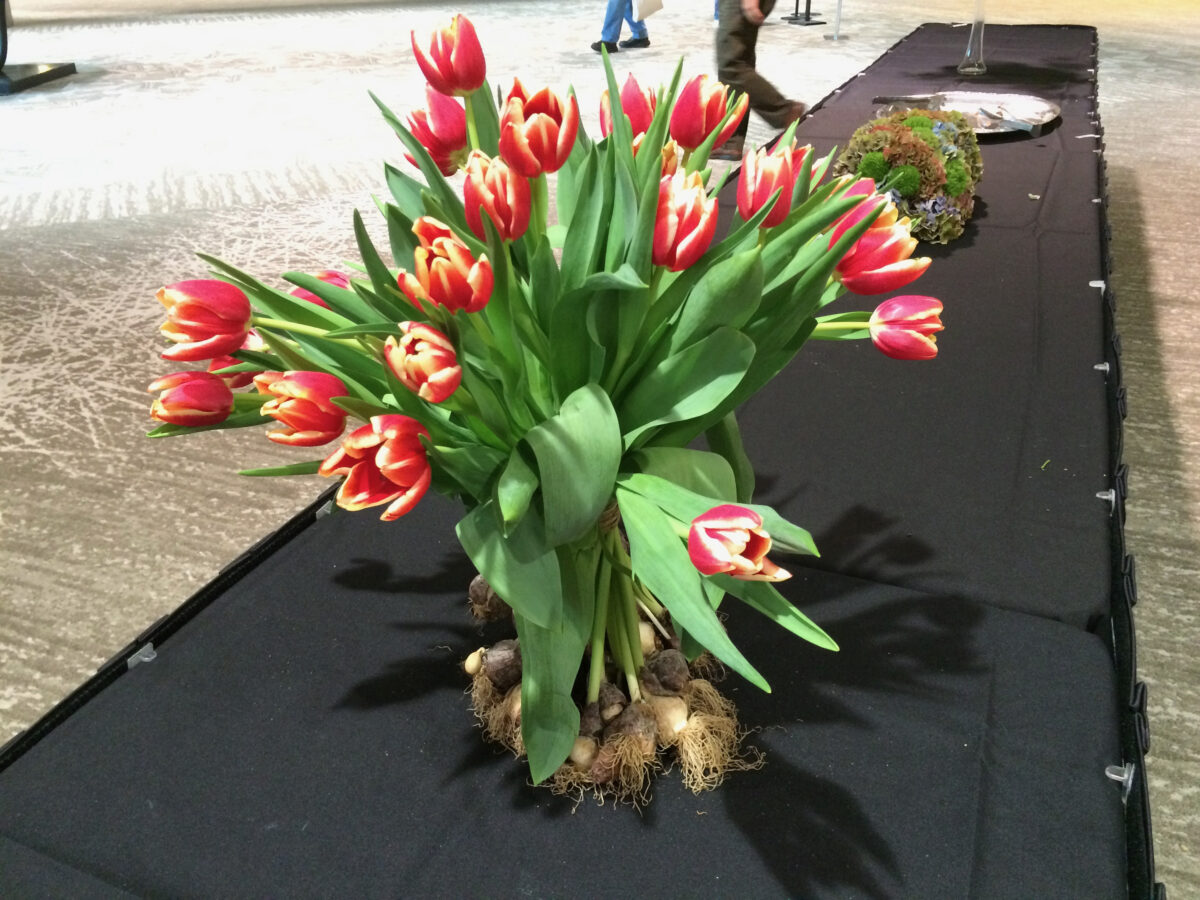
Courtesy Meredith Seaver
Cutting tulips can be displayed with their bulbs attached. Rinse away any soil on the bulbs and stem, then tie the stems into a tidy bundle using decorative ribbon or twine.
If you’re short on space, try planting the tulip bulbs in your garden beds or raised garden beds in an area that won’t you need until the tulips are done. This way you can utilize the space during the fall, winter and early spring and they’ll be pulled out before it’s time to plant your most tender warm-season vegetables like cucumbers and peppers.
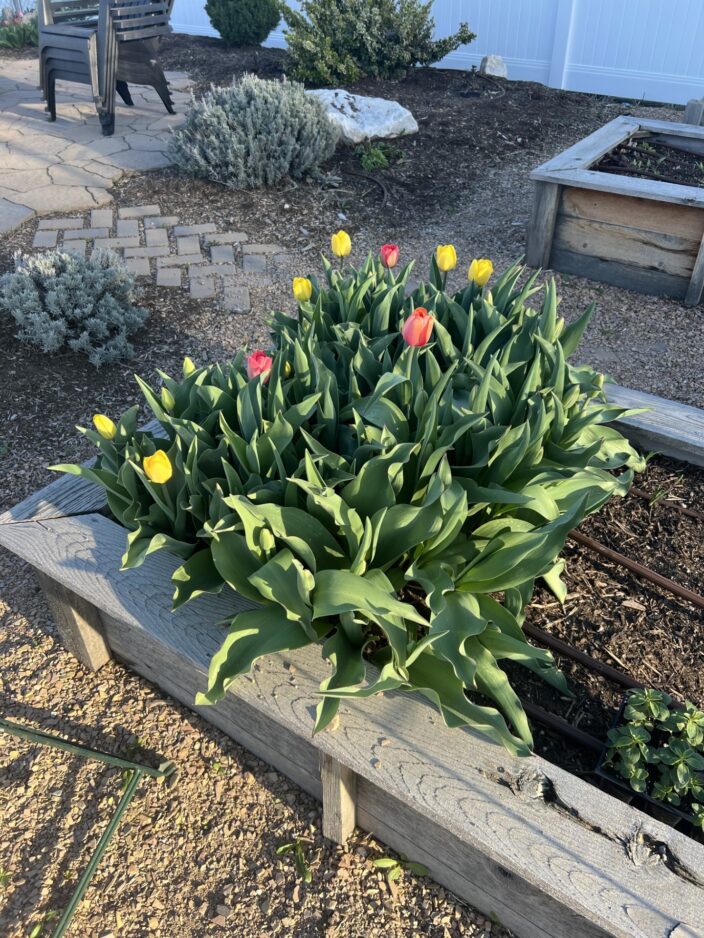
For the longest vase life, harvest cutting tulips when they begin to show color but haven’t fully opened.

